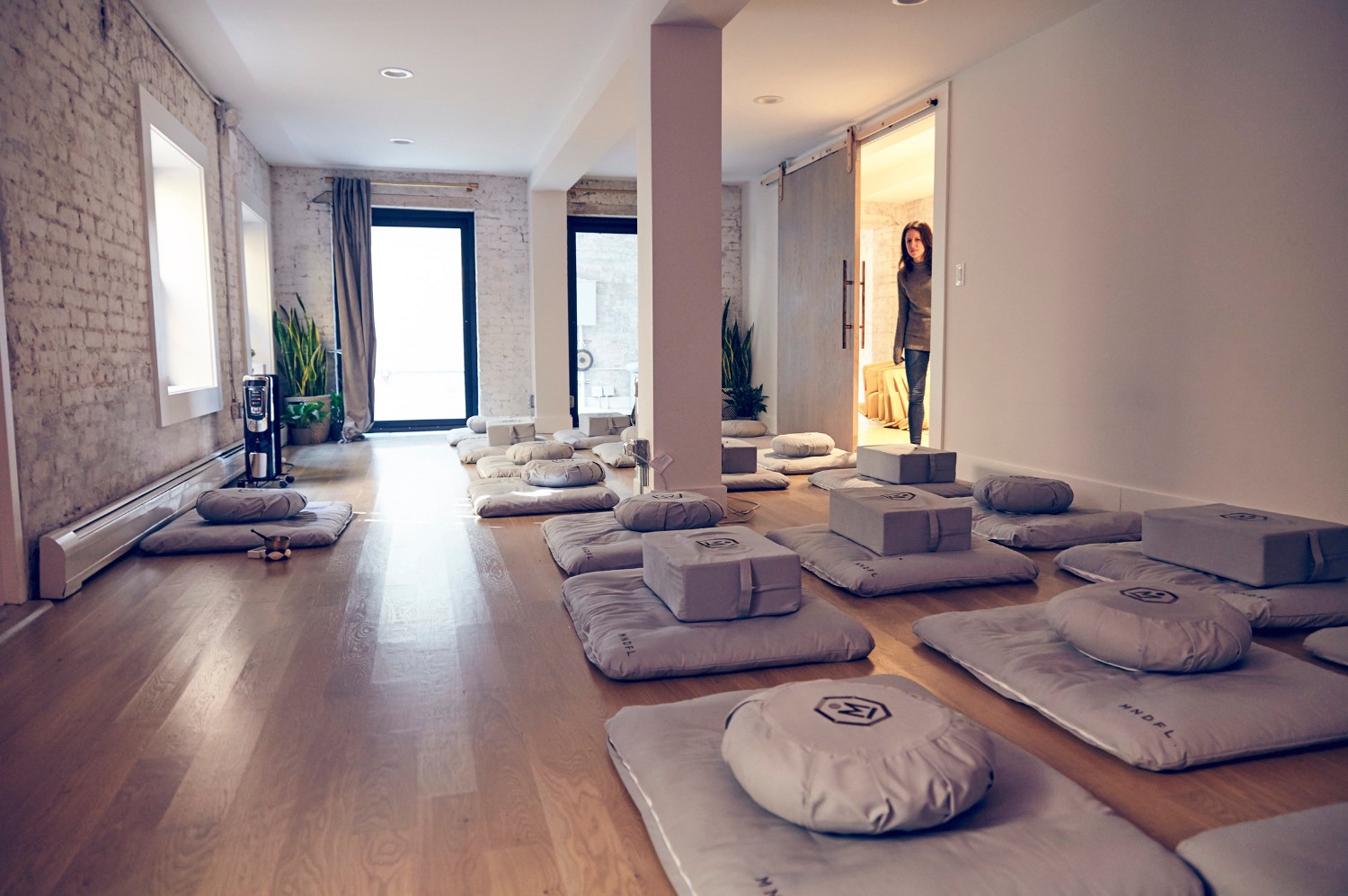I can meditate here.
I can meditate there.
I can meditate anywhere.
Guess what?
So can you.
I am a lover and practitioner of meditation and happen to co-own a meditation studio, but I am not a meditation expert — that’s what I have my co-founder, Lodro Rinzler, for. That being said, I do know a thing or two about being a mere human and incorporating this powerful practice into my already very full life. So from one layperson to another, I’m going to share three crucial things that it made it possible for me to meditate anywhere (even in the middle of Times Square).

1. Practice makes portable.
Before you can just meditate anywhere, you have to actually learn how to meditate. Meditation is a word that gets thrown around a lot, like a lot, and at MNDFL we have a very specific view of what meditation actually is. We’ve gathered 32 of New York City’s expert, certified teachers so that we can offer time-tested traditional techniques in an accessible manner. It’s important to learn real meditation techniques that come from real traditions with real teachers. There’s a reason what we offer has been around for 2,500+ years: It works. And it’s kind of fun that science is finally proving what some wisdom traditions have known for a seriously long time.
If you don’t have a MNDFL near you, don’t worry—there are several apps that can help you launch a practice. I’d recommend Insight Timer and Headspace.
2. Remember your three C’s.
There are three “C” words I try to remind people of when it comes to meditation: commitment, consistency, cumulative. Committing to a style and practicing consistently allowed me to experience firsthand the cumulative effects of meditation in my own life. My favorite benefits include: a dramatic shift in my relationship to time (I feel like there’s more of it!) and if something emotionally triggers me, I have way more space to process and respond to it (I’m less reactive!).
Like going to the gym or learning to play an instrument, you can’t lose 10 pounds or play Mozart after a single session. In addition to those fun benefits, my relationship to my practice has strengthened. In the beginning, I felt a little bit like an infant learning how to walk. I remember fumbling my way through a sit: “Am doing this right?” “Wait, what was my mantra?” “Why am I naming all the things on my to-do list?” “What am I going to have for lunch?” But now that I’m committed, consistent, and deeply connected to my practice, it’s very easy to practice in public places with high potential for distraction, like subways, planes, cafes, or parks.
Fun personal fact: I’ve noticed that my body craves meditation kind of like it can crave food — it wants what it wants when it wants. Just like I feed it food when it asks, I also feed it meditation — doesn’t matter if I’m at home, the studio, or the airport.
3. Meditation is a judgment-free zone.
There’s something about being human and having this thing called an ego that can get in the way of doing all sorts of important things. The mind is designed to psyche us out on a daily basis (see: negativity bias). One of the tricks of meditating anywhere is not caring what other people think about you meditating anywhere.
No, you’re not a weirdo. And no, no one cares if you just want to sit and meditate… unless, of course, you’ve made plans with them and you decide to do it in the middle of a meeting or a meal. People are generally so wrapped up in their own lives (and often their devices) that if they see you meditating in your office cubicle or on a bus, they may give you a cursory glance and go back to whatever it is they were doing that was much more relevant to their own lives. So no, you’re not freaking people out if you close your eyes on the subway and have your hands gently resting in your lap — they might think you’re really skilled at sleeping upright. Worried about being medi-obvious? Put on some sunglasses or pop headphones in your ears that may or may not be playing music. Have a bag with you that includes your wallet and cell phone? Rest it gently on your lap and wrap your arms gently around it or put the strap over your shoulder.
So I hope you decide to take your practice for a spin off the cushion and outside a silent room. Like Sharon Salzberg said, “Meditation is the ultimate mobile device; you can use it anywhere, anytime, unobtrusively.”
You too can mediate here.
You can meditate there.
Now you can meditate anywhere.

Originally published at medium.com


